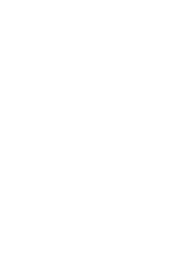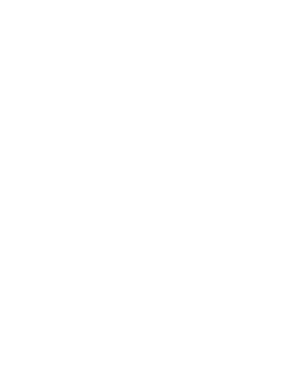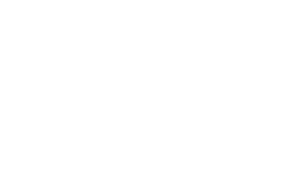 |
 |
 |

|
The first Kinematics dress, now acquired by the MoMAP
Photo: Steve Marsel
The dress was produced with the generous support of Shapeways at their factory in New York City. It was 3D-printed in nylon by Selective Laser Sintering over a span of approximately 48 hours. We traveled to NYC to watch the dress emerge from the 3D printer. We observed as two masked technicians slowly excavated the folded dress from a huge block of nylon powder. Afterwards, they blasted it with air to remove the loose powder from its joints and surface. The experience was stressful and full of suspense. While we watched and waited, we were wondering if our idea would actually work. Would the dress be able to unfold?
We felt both relief and satisfaction when the print unfolded into a wearable gown! Our friend Lana joined us at the factory to try the dress on and give it a test run down what could be the world’s most expensive runway, a corridor lined with industrial 3D printers.
Nervous System
561 Windsor St Ste A206
Somerville, MA 02143
http://n-e-r-v-o-u-s.com
|
|
 |
NOW WITH MORE MATERIALS AND MORE COLOUR, 2015 IS THE YEAR TO TRY 3D PRINTING AT HOME
Martijn Gommeren FabLab Cardiff Manager at Cardiff Metropolitan University
8 January 2015, 6.11am GMT
Martijn Gommeren works for Cardiff Metropolitan University in FabLab Cardiff. Cardiff Met has received funding from the Welsh Government for starting up the Lab. He is affiliated with Fab Foundation and FabLabs UK.
|

|
Posted 28 January 2015
|
Share this:
|
|
Have you considered buying a 3D printer? A major spectacle at the Consumer Entertainment Show in Las Vegas for the last two years, they’re now available for as little as £300 – around the same price as the latest Xbox One or Playstation 4.
But why would you want one? There are as many reasons as you can imagine, from the intricate, flowing, 3D-printed dress on display at the CES, to printing your own electronics.
|
|
|
|

|

|

|

|
|
Working with 3D printers every day there isn’t much that surprises me any more. But this dress – 3,212 panels connected by 4,709 hinges printed in one go and designed using only a Javascript program – blows my mind. The possibilities of 3D printing seem endless – isn’t that sufficient reason to buy one?
It really is possible now to create your own products and customise them at home. At £1,900 (US$3,000) and perhaps a day spent printing after a fairly lengthly programming and modeling process, your first 3D design will probably be a disappointment in comparison.
Youtube>
This highlights the knowledge gap. The printing is the easy part of the process. The real challenge is the design process. Luckily the two main players in desktop 3D printing, Makerbot Industries (now owned by Stratasys) and Ultimaker, have built communities around their printers: Thingiverse and Youmagine. Through these websites users can share their designs under Creative Commons licenses, which means that others can use the design as long as the original creator is credited. This has transformed access to 3D printing by providing a library of designs, gimmicks, toys and home hacks to choose from. For many, this is enough justification to buy a 3D printer as you can print gifts for friend and family.
|
|
|
|
|

|

|

|
Design and inspiration
As children we’re encouraged to make things, whether from Lego or from glue and cereal boxes. This teaches us creative thinking and the skill of working with what’s available. We make houses, spaceships, cars and more, fired by our imaginations. For some this may become a life-long passion and career in the creative arts or design industries.
If we think of 3D modelling software such as Tinkercad as simply another building tool to play with, computer aided design (CAD) sounds a little less daunting. Look at CAD as a collection of glue, string, wire, cardboard boxes and Sellotape and suddenly a 3D printer becomes the obvious choice for fixing a broken clip, replacing that lost piece from a board game or making a jelly mould in some crazy new shape.
From a professional point of view, using CAD in the design process has numerous benefits. Prototypes are easily tweaked to change size and design (think jewellery or tableware), models made for presentations (think of the impact of architectural designs when transformed from two to three dimensions) and small batch products easily produced.
|
|

At last, printing in full colour. Spectrom
|
|
|
|
|
|
The future is 3D
At CES 2014, there was a big push by manufacturers to bring the 3D printer into the mainstream, with many firms showing off their products such as MakerBot’s Replicator Z18, Formlab’s Form 1, and the Pegasus Touch from FSL3D.
At this year’s CES new printers bring improved capabilities, that can now print in stone, wood, and even metal, full colour printed materials from Spectrom, 3D printed electronics from the Voxel8, or even the CocoJet, which can print in food – adding together layers of chocolate to form a solid chocolate cake creation.
So yes, now is the year you should buy a 3D printer and learn how to work with CAD – it will transform the way you design and work. Because this technology will change the world – maybe not today, tomorrow or in the next few months, but soon.
Photo Homepage: detail spread material, http://n-e-r-v-o-u-s.com
Source: http://theconversation.com
|
|
|
|
|
|
|


